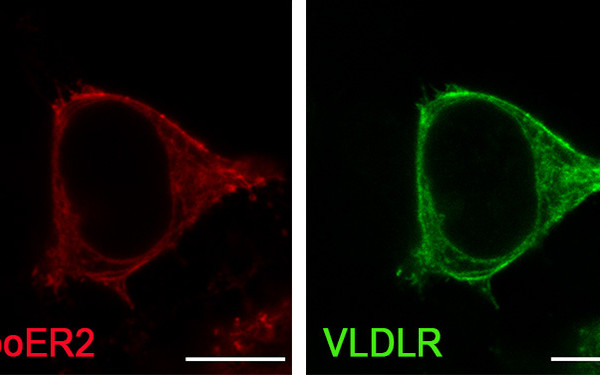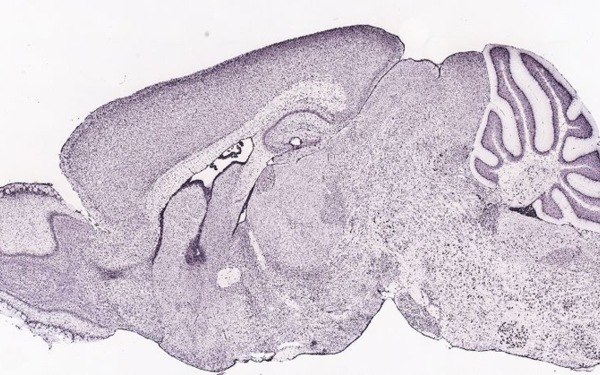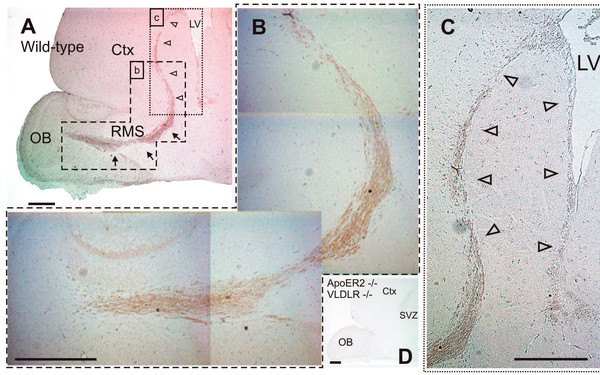Spotlights
Expression of ApoER2-mCherry and VLDL receptor-mGFP in HEK293 cells
We recently discovered that the initial event of the Reelin signaling pathway is the formation of higher order receptor clusters on the surface of target neurons. Dlugosz et al. Front. Mol. Neurosci. 12:53. doi: 10.3389/fnmol.2019.00053
Thrombospondin stabilizes the outgrowth of neuroblast chains from SVZ-explants
Thrombospondin-1 was discovered in our laboratory as ligand for ApoER2 and VLDL receptor. The signal created by this interaction guides neuroblasts along the rostral migratory stream to form the olfactory bulb during embryonic brain development. Blake et al. EMBO J. 27, 3069 - 3080, 2008



